The Curiosity Stop: The Village of Peille in the Alpes-Maritimes
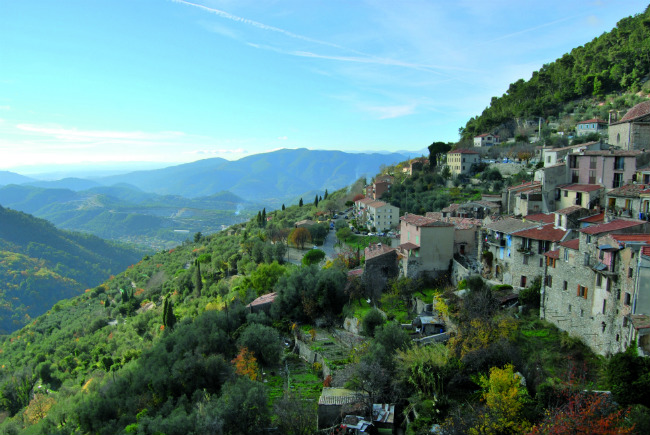
A wonderful Provençal village without the crowds, Peille welcomes visitors with a sign declaring itself “le plus curieux” in the Alpes-Maritimes. Justin Postlethwaite finds out what’s so special
It seems unthinkable that a village maire in Provence might offer his services as a tour guide on a sunny Saturday in autumn, when he doubtless has far more important things to do. But here in bijou, hilltop Peille, there is no place for the airs and graces that some better-known or more tourist-centric Provence villages indulge in. It may be just 17 kilometres from the glitz of Monaco and located at a dizzying altitude of 630 metres above sea level, but everything about Peille says ‘down to earth’. My guide, Cyril Piazza, is more than happy to chaperone me around the village in which he grew up.
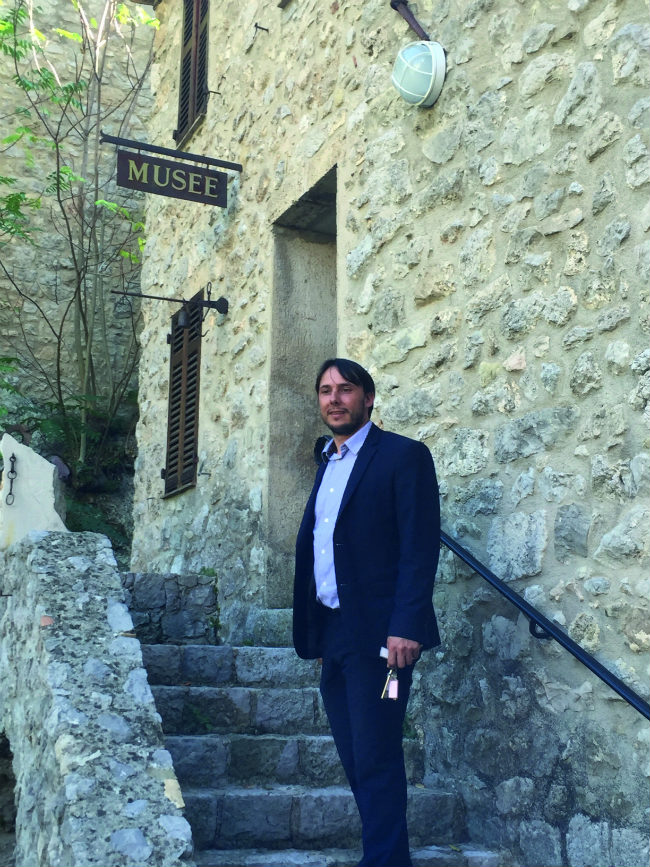
Mayor Cyril Piazza. Photo: Justin Postlethwaite
We meet in the village’s hub, Place Carnot, framed by medieval buildings – one of which houses an impossibly cute boulangerie. To get here, I navigated a maze-like huddle of narrow streets and arched walkways. The square is picturesque and peaceful and, at noon on this off-season samedi, only populated by a few kids kicking a football against a wall.
Lunch is booked at Chez Nana, an old-school charmer of a restaurant with a wide-reaching reputation for what might be described as Provençal ‘soul food’. As far as I can gather – given that the only other places offering sustenance are a crêperie and a café – it acts very much as the beating heart of the village, and is full for lunch.
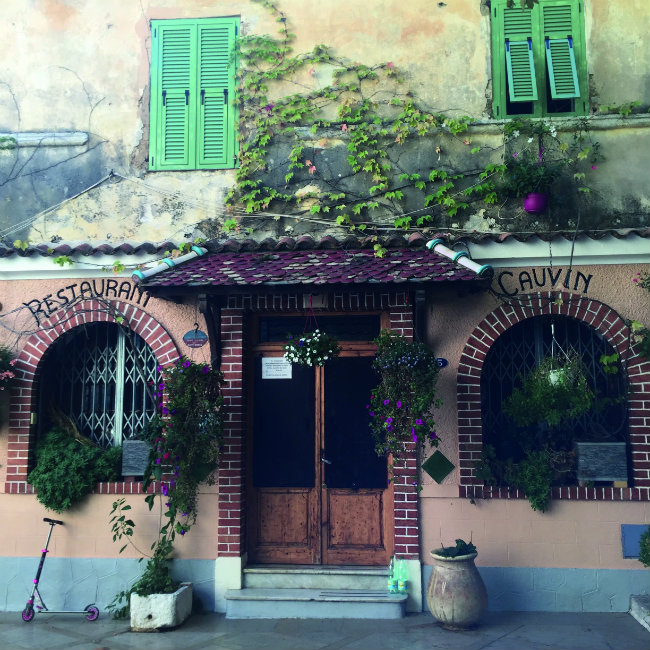
Chez Nana. Photo: Justin Postlethwaite
Inside, the dark-wood décor lends it a warm, cosy rusticism, while the owners’ welcome is open-hearted. The menu is fuss-free and packed with house specialities. The bar area is watched over by proudly displayed photographs of famous French singer Léo Ferré, the crooner of Avec le Temps with a shock of white hair, who was a regular here. In 2010, his wife unveiled a plaque on Place Carnot commemorating the times they spent in Peille from the 1970s onwards, often enjoying meals Chez Nana.
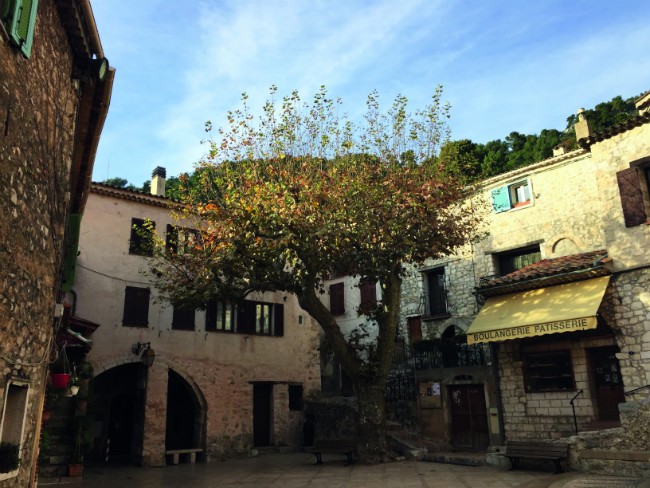
Village hub Place Carnot. Photo: Justin Postlethwaite
I understand why Ferré liked it here, not least from a culinary perspective. Laid out before us, from the €20 three-course menu, are generous portions of beignets (courgette flowers and aubergines fried in a light batter) and a weighty plateful of slow-cooked beef in a rich wine sauce. This daube is a speciality of the Nice region, and a perfect out-of-season cockle-warmer. (Chez Nana closes each year during July and August). Such was Ferré’s fondness for the place, that he penned a ditty called Peille, in which he honoured the titular Nana, the restaurant’s founding matriarch and iconic local figure (it is her offspring who run it now).
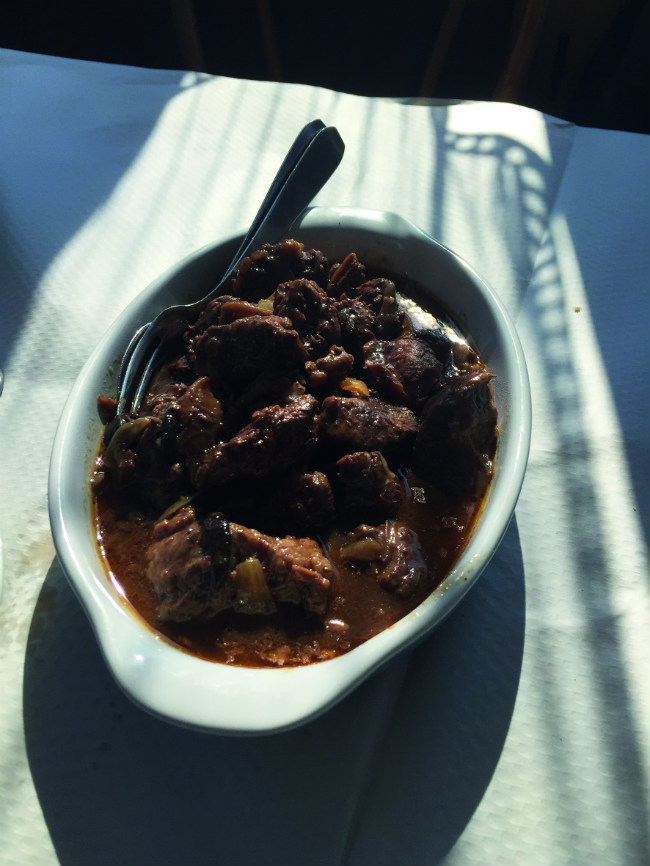
Daube stew at Chez Nana. Photo: Justin Postlethwaite
The village’s origins were Celto-Ligure, but it has changed hands many times. From 1388 it fell under the jurisdiction of the house of Savoy, but was returned to France in 1792. Then from 1814 to 1860, Peille was ruled by the kingdom of Piedmont and Sardinia, which returned it to France in 1860.
Today the commune of Peille boasts 2,500 inhabitants, but they do not all reside within the confines of the village walls. Residents are spread over about 43 square kilometres. There is also Saint-Martin de Peille further down the valley in the expanding, modern part of the commune, while a third part, La Grave de Peille, is an industrial zone including a cement factory that was once a major local employer.
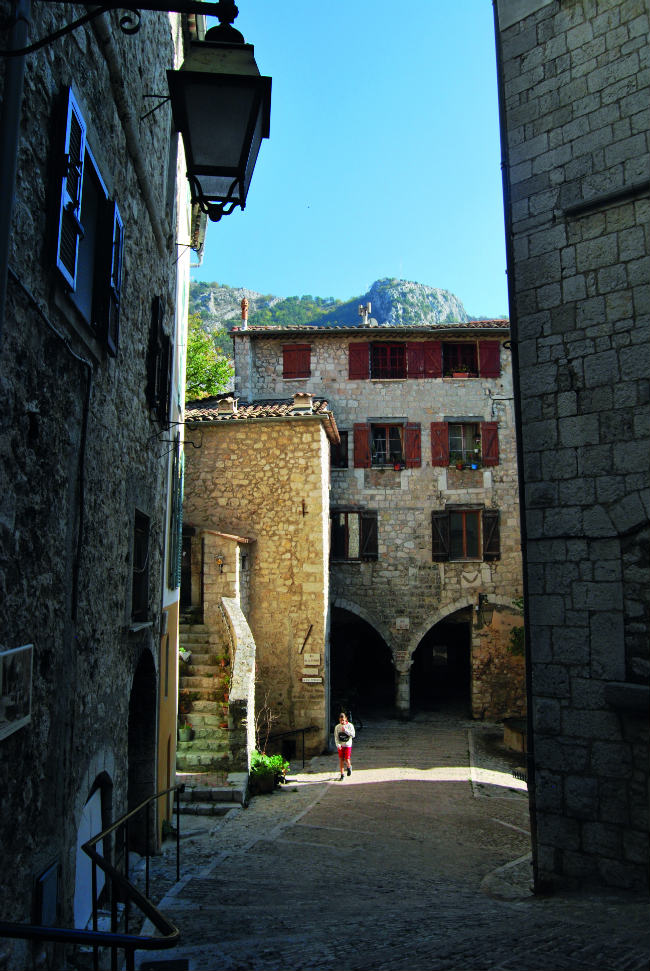
The village of Peille. Photo: Justin Postlethwaite
TAKING THE TOUR
Interested to uncover any evidence for Peille’s peculiar description of itself, and in need of a brisk walk to work off our hearty lunch, I follow Cyril first to the mayor’s office on the corner of the square. The hôtel de ville sits in the splendidly refurbished former Chapelle Saint-Sébastien Peille. Its coupole from 1380 provides a fine focal point. This prominent round tower-top is what you can see when approaching the village by car. As far as places of work go, it is enviable, with majestic views out over the expanse of the Peillon valley below. It is to the mairie that visitors are invited to begin their own guided tours.
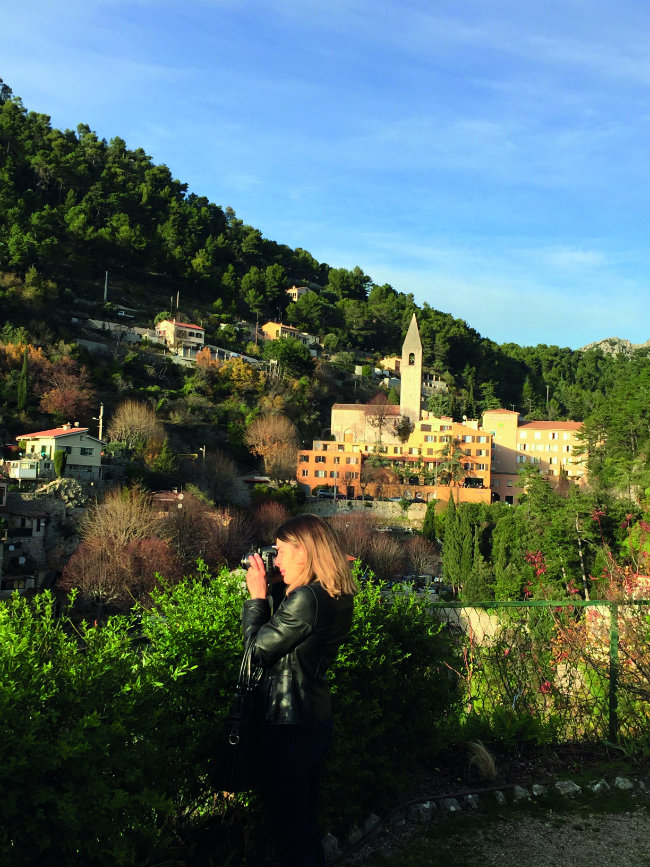
Sainte-Marie church nestles on the hillside. Photo: Justin Postlethwaite
From this central meeting point, if you are going it alone, you can take your pick of side streets in which to get lost. A little flânerie – aimless wandering where the only goal is to stumble across something out of the ordinary – goes a long way in Peille. Keep an eye out for the original 14th-century Gothic fountain (with drinkable water) in the Place de Colle. The larger of the two vessels here watered the village’s thirsty humans, while the smaller one was for animals.
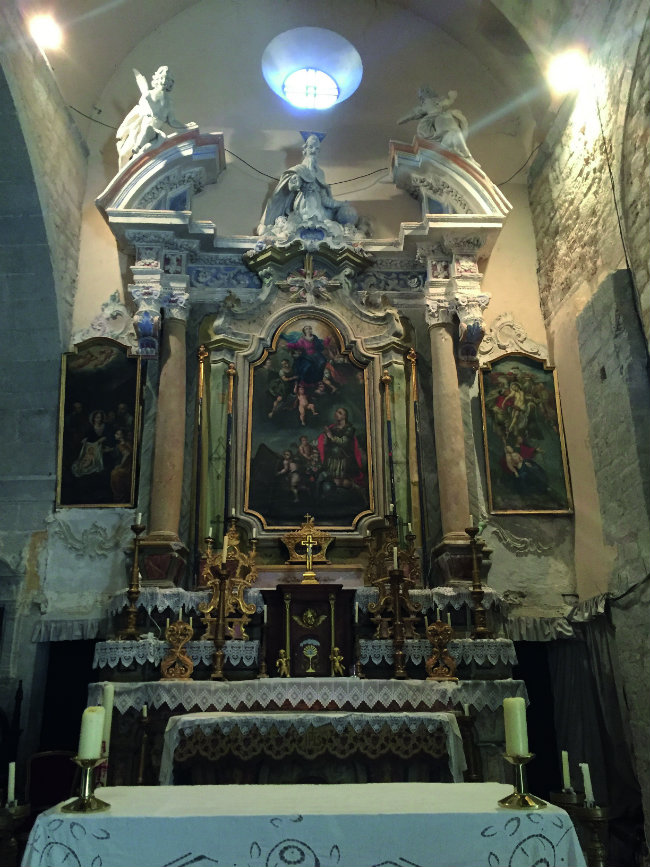
The church’s 16th- century altarpiece. Photo: Justin Postlethwaite
From here, climb up towards Palais Lascaris, a solid-looking, pale-orange beauty seeming to cling to the cliff edge. Built by Lascaris family members who became counts of Peille in 1651 (until their authority was rudely interrupted in 1789), it now serves as a media library. From the viewpoint above its adjoining courtyard, I stop to take in a few seconds of amicable pétanque being played by relaxed locals, before heading up Avenue Mary Garden towards the village’s Monument aux Morts. This sits atop a rock called ‘Le Baous’ – a prominent location chosen so the whole village could see it.
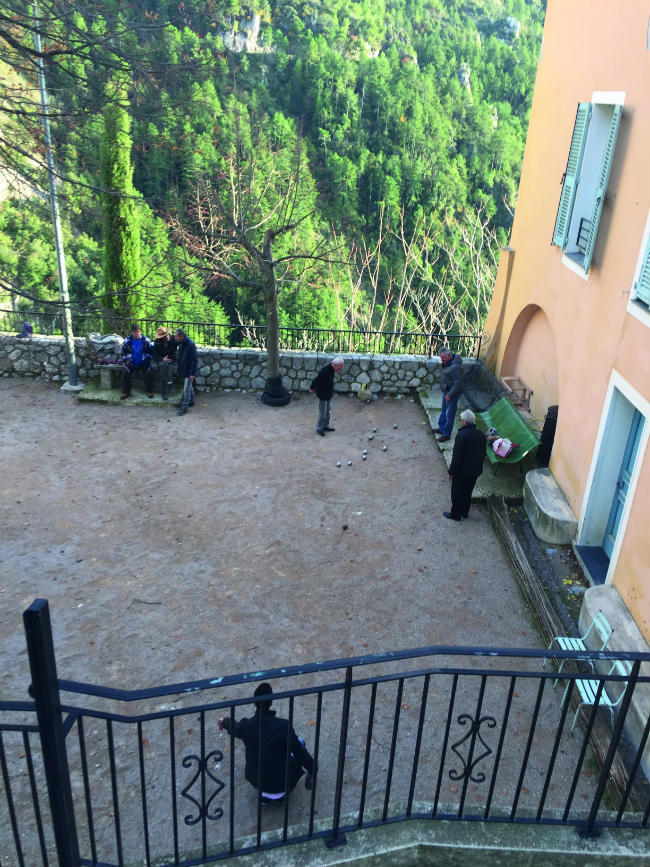
Pétanque players. Photo: Justin Postlethwaite
The creation of this ‘pacifist’ war monument has somewhat left-field origins. The aforementioned Mary Garden (1874-1967) was a Scottish opera singer who enjoyed considerable success in France, and donated funds for its creation. She sojourned often in the village at the invitation of maire Marcel Montagne and in her later years became an honorary citizen of Peille.
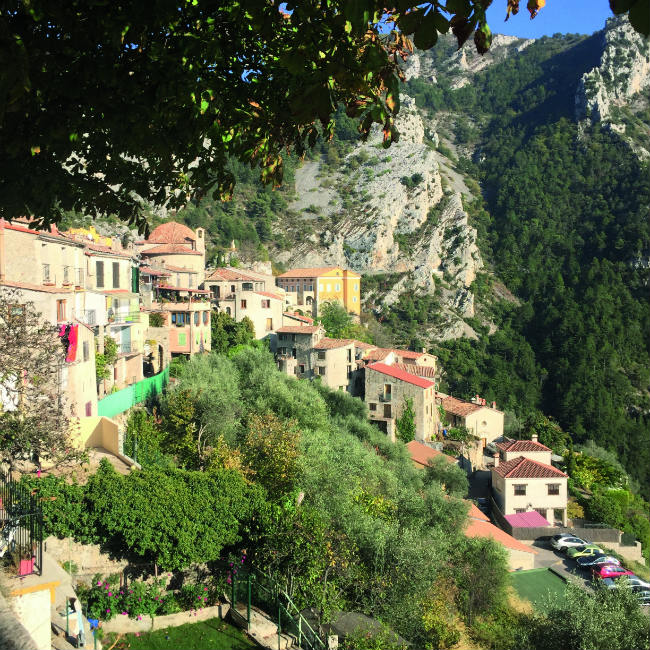
Spectacular views across the village can be enjoyed from place Saint-Roch. Photo: Justin Postlethwaite
From the monument, the beady-eyed can look across the road that brought them into the village from La Turbie, and near the top of the cliff-face, spot the remnants of the village’s gallows – where local miscreants and evil-doers were shamed and hanged. Until recently it was also possible to see climbers making their way across the via ferrata on this sheer cliff, but this activity is currently suspended. Outdoor types fear not, though – this is road-bike and VTT (mountain bike) heaven and the mairie can organise trails with Kieran Page, a former champion cyclist who now provides accompanied bike tours of the area.
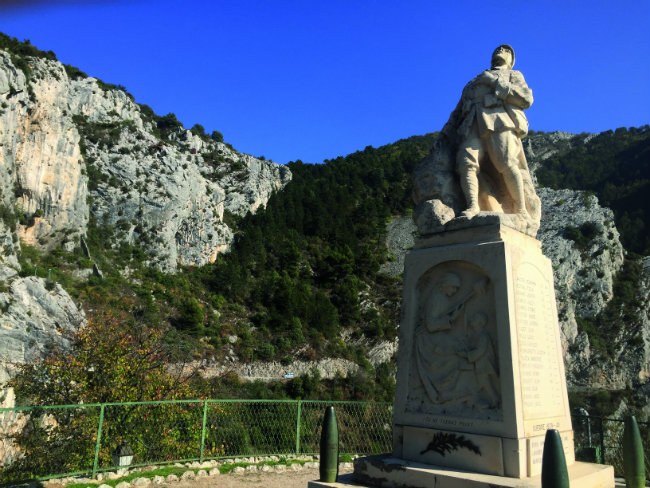
The poignant Monument aux Morts. Photo: Justin Postlethwaite
GET ME TO THE CHAPEL
Back in the village, it’s worth heading to the tiny yellow church at Place Saint-Roch. Dating from the end of the 16th century, this small église was reimagined after a terrible earthquake in 1867. From here, enjoy the views back across to the Lascaris Palace and the rest of Peille before heading up around the upper part of the village along Boulevard Aristide Briand, where you’ll find the imposing Église Sainte-Marie.
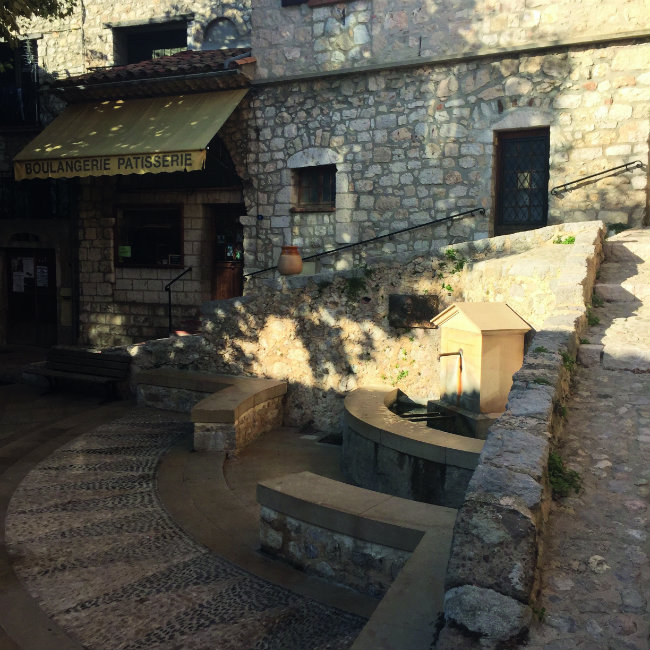
The heart of village life, the local boulangerie. Photo: Justin Postlethwaite
It was originally built by 11th-century Saint-Pons monks from the huge monastery in Nice before various additions and amendments were made over subsequent centuries, including a 12th-century clock tower. It has a Romanesque nave and a 16th-century altarpiece by Nice painter Honoré Bertone. You may even be allowed to play the organ, as I was, if you’re lucky!
Nearby is the Avenue du Capitaine Chauncey. The Captain was said to be a lover of none other than Mary Garden, another tantalising layer in a fascinating history. Curiosities at every turn, Peille has, without doubt, more than its fair share of remarkable and strange stories to tell. But it’s perhaps the welcome sign, like a beacon for the curieux and inquisitive keen to find out more, that helps to seal its unusual description.
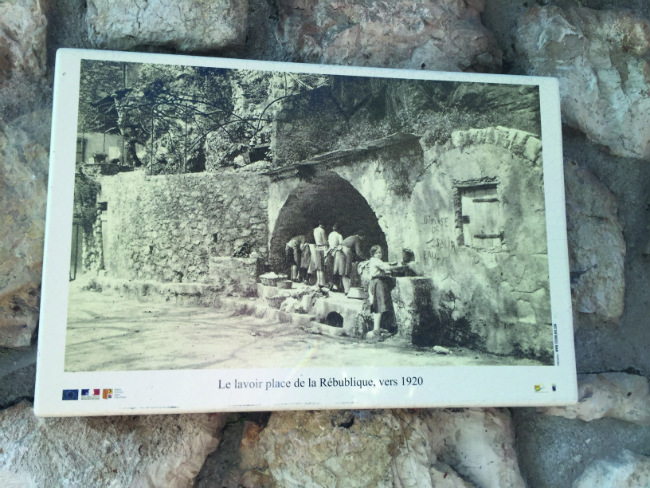
Peille’s public lavoir as it was in days gone by. Photo: Justin Postlethwaite
THINGS TO DO
Visit the village’s tiny and somewhat ramshackle Musée du Terroir for a real insight into Provençal village life of yesteryear. This gathering of artefacts by passionate local collector Louis Demay (who died in 1997) reveals how Peillasques (Peille residents) dressed, worked, ate, learned, farmed and relaxed, with exhibits including giant old olive oil vats, traditional clothing and even ploughs.
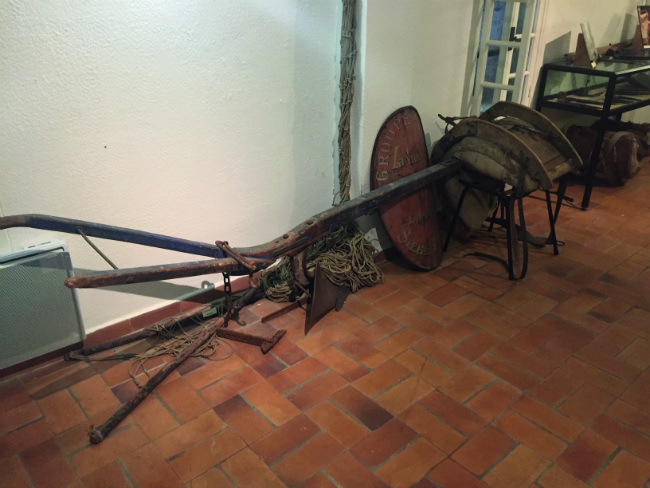
A plough at the Musée du Terroir. Photo: Justin Postlethwaite
FESTIVALS
The village comes to life on several key dates during the year.
In July, Estivales de Léo Ferré sees homage paid to the much-loved singer whose heart was stolen by the village, while the Festin des Baguettes on the first Sunday of September is not, as you might assume, a celebration of daily bread. Instead, it refers to water-divining baguettes (wands) and sees young local girls offer a magic wand wrapped in ribbons to potential paramours. Harvests of wheat and lavender are celebrated in early August with feasts and parties.
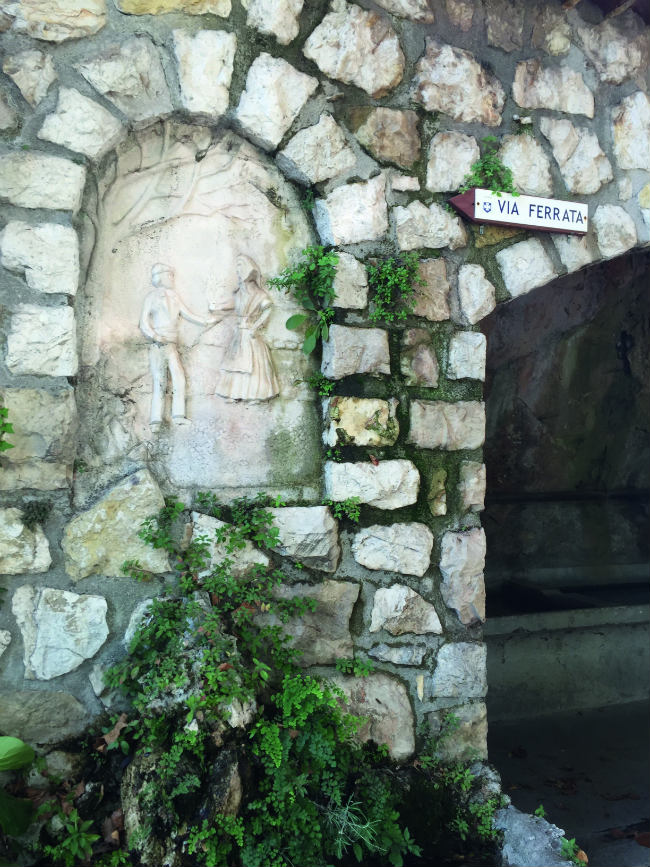
A curious relief showing the Festin des Baguettes. Photo: Justin Postlethwaite
CONTACTS
For guided tours and details of where to stay in the area including gîtes and chambres d’hôtes, as well as activities such as cycling and hiking, contact Peille’s Office de Tourisme at www.lescommunes.com or call +33 (0)4 93 91 71 71.
From France Today magazine
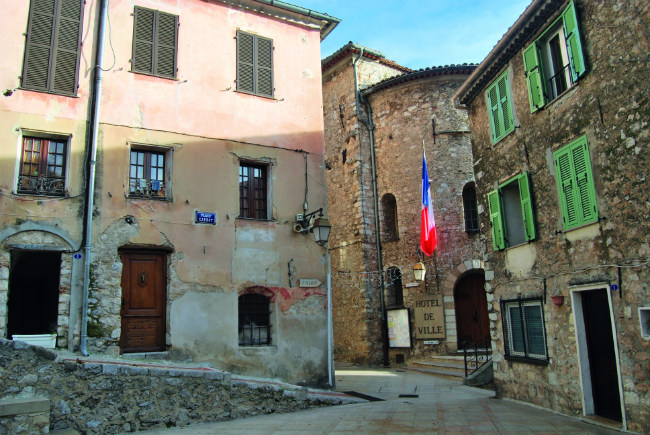
Peille’s mairie. Photo: Justin Postlethwaite
Share to: Facebook Twitter LinkedIn Email
Leave a reply
Your email address will not be published. Required fields are marked *




REPLY